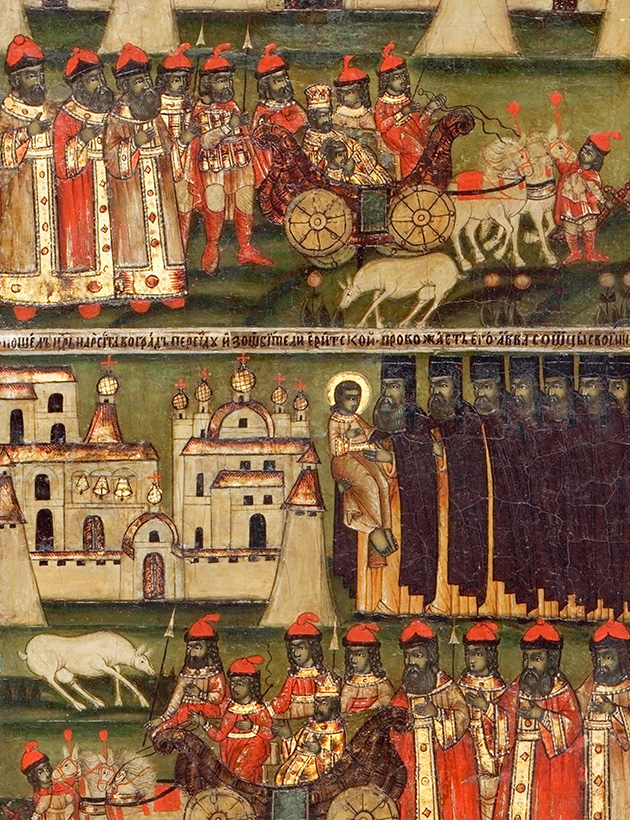Exhibitions
6+Riddles of Hagiographic Icons
Kolomenskoe
MARCH 5 — JUNE 29, 2025
Tue. - Thu., Sun. 10:00-18:00
Palace of Tsar Alexey Mikhailovich, Small Exhibition Hall, Entrance 5. Bldg 69, 39 Andropov Avenue
Kolomenskoe Museum-Reserve presents the exhibition “Riddles of Hagiographic Icons”. The exhibition at the Palace of Tsar Alexey Mikhailovich displays iconographic images from the late 15th — last quarter of the 19th century from the museum-reserve collection and private collections.
Hagiographic icons appeared in Byzantium, and the oldest ones among surviving date back to the 12th century. Similar images of Russian saints started to spread widely after the canonization of a number of wonderworkers under Metropolitan Macarius at the Local Councils of 1547 and 1549. Like fresco paintings, they served an educational function: they explained the details of religious doctrines, as well as illustrated the most complex theological subjects.
As a rule, a full-length or waist-length image of the saint is placed in the center of a hagiographic icon, with scenes of his life and miracles arranged around it. The events of the saint’s life can be separated with borders and arranged in so-called marginal scenes, framing the centerpiece, or depicted in the background on the sides of the saint. The images on hagiographic icons illustrate the hagiography texts. They can be borrowed both from canonical sources and apocryphal literature.
Visitors to the exhibition at the Palace of Tsar Alexey Mikhailovich will see traditional episodes found in the lives of saints and learn how to ‘read’ a hagiographic icon correctly. The iconography is complemented by books and graphics, liturgical garments, copper-cast icons, wooden carvings and mother-of-pearl carvings.
The exhibition presents ancient images of St. Nicholas the Wonderworker, the Prophet Elijah, John the Baptist, the Great Martyr George, the Great Martyr Paraskeva, the Great Martyr Barbara, the Martyr Anastasia of Rome, Blessed Procopius and John of Ustyug, St. Mary of Egypt, St. Demetrius of Rostov. There are also rare hagiographic icons of St. Athanasius of Alexandria, the Unmercenary Saints Cosmas and Damian, and the Great Martyr Marina of Antioch.
The icon of St. Onuphrius the Great depicting the hagiography of the holy hermit elder is worthy of special notice. It was created in the workshop of the Solovetsky Monastery and was originally located in a local church founded in 1666. In 1976, the image was restored in the Grabar Art Conservation Center. Experts came to the conclusion that the iconographer depicted the walls and church of the monastery of Eryth as the white-stone Solovetsky monastery, and the chariot of Tsar Narseh as the carriage of Peter the Great. The emperor visited the Solovki Islands in 1702 with his son Tsarevich Alexey.